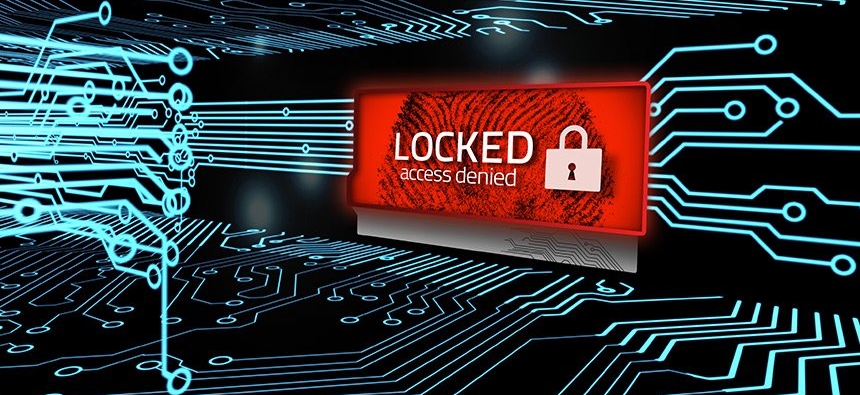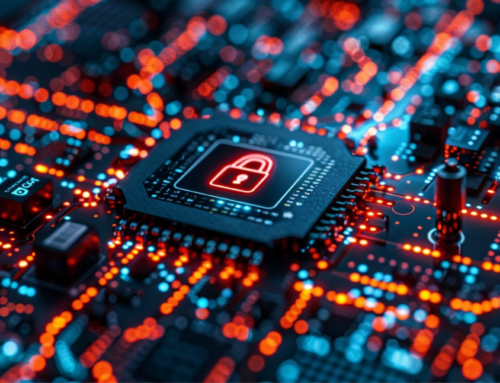Ransomware is a form of malware that targets your critical data and systems for the purpose of extortion, and it is frequently delivered through spearphishing emails. Ransomware targets home users, businesses, and government networks and can lead to temporary or permanent loss of sensitive or proprietary information, disruption to regular operations, financial losses incurred to restore systems and files, and potential harm to an organization’s reputation. Ransomware may direct a user to click on a link to pay a ransom; however, the link may be malicious and could lead to additional malware infections. After the user has been locked out of the data or system, the cyber actor demands a ransom payment. After receiving payment, the cyber actor will purportedly provide an avenue to the victim to regain access to the system or data.
Protecting Your Networks from Ransomware
Ransomware is the fastest growing malware threat, targeting users of all types—from the home user to the corporate network. On average, more than 4.000 ransomware attacks have occurred daily since January 2016. This is a 300% increase over the approximately 1.000 attacks per day seen in 2015.
There are very effective prevention and response actions that can significantly mitigate the risk posed to your organization. One of the most effective is to educate your personnel: attackers often enter the organization by tricking a user to disclose a password or click on a virus-laden email attachment. Remind employees to never click unsolicited links or open unsolicited attachments in emails. To improve workforce awareness, the internal security team may test the training of an organization’s workforce with simulated phishing emails. Prevention is the most effective defense against ransomware and it is critical to take precautions for protection. Infections can be devastating to an individual or organization, and recovery may be a difficult process requiring the services of a reputable data recovery specialist.
The U.S. Government (USG) recommends that users and administrators take the following preventive measures to protect their computer networks from falling victim to a ransomware infection:
Preventive Measures
- Implement an awareness and training program. Because end users are targets, employees and individuals should be aware of the threat of ransomware and how it is delivered;
• Enable strong spam filters to prevent phishing emails from reaching the end users and authenticate inbound email using technologies like Sender Policy Framework (SPF), Domain Message Authentication Reporting and Conformance (DMARC), and DomainKeys Identified Mail (DKIM) to prevent email spoofing;
• Scan all incoming and outgoing emails to detect threats and filter executable files from reaching end users;
• Configure firewalls to block access to known malicious IP addresses;
• Patch operating systems, software, and firmware on devices. Consider using a centralized patch management system;
• Set anti-virus and anti-malware programs to conduct regular scans automatically;
• Manage the use of privileged accounts based on the principle of least privilege: no users should be assigned administrative access unless absolutely needed; and those with a need for administrator accounts should only use them when necessary.
Configure access controls—including file, directory, and network share permissions— with least privilege in mind. If a user only needs to read specific files, the user should not have write access to those files, directories, or shares.
• Disable macro scripts from office files transmitted via email;
• Implement Software Restriction Policies (SRP) or other controls to prevent programs from executing from common ransomware locations, such as temporary folders supporting popular Internet browsers or compression/decompression programs, including the AppData/LocalAppData folder;
• Consider disabling Remote Desktop protocol (RDP) if it is not being used;
• Use application whitelisting, which only allows systems to execute programs known and permitted by security policy;
• Execute operating system environments or specific programs in a virtualized environment;
• Categorize data based on organizational value and implement physical and logical separation of networks and data for different organizational units;
• Back up data regularly. Verify the integrity of those backups and test the restoration process to ensure it is working;
• Conduct an annual penetration test and vulnerability assessment;
• Secure your backups. Ensure backups are not connected permanently to the computers and networks they are backing up. Some instances of ransomware have the capability to lock cloud-based backups when systems continuously back up in real time, also known as persistent synchronization. Backups are critical in ransomware recovery and response; if you are infected, a backup may be the best way to recover your critical data.
What to Do If Infected with Ransomware
Should preventive measures fail, the USG recommends that organizations consider taking the following steps upon an infection with ransomware:
- Isolate the infected computer immediately. Infected systems should be removed from the network as soon as possible to prevent ransomware from attacking network or share drives;
• Isolate or power-off affected devices that have not yet been completely corrupted. This may afford more time to clean and recover data, contain damage, and prevent worsening conditions;
• Immediately secure backup data or systems by taking them offline. Ensure backups are free of malware;
• Contact law enforcement immediately;
• If available, collect and secure partial portions of the ransomed data that might exist;
• If possible, change all online account passwords and network passwords after removing the system from the network. Furthermore, change all system passwords once the malware is removed from the system;
• Delete Registry values and files to stop the program from loading. Implement your security incident response and business continuity plan. Ideally, organizations will ensure they have appropriate backups, so their response to an attack will simply be to restore the data from a known clean backup. Having a data backup can eliminate the need to pay a ransom to recover data. There are serious risks to consider before paying the ransom. However, after systems have been compromised, whether to pay a ransom is a serious decision, requiring the evaluation of all options to protect shareholders, employees, and customers. Victims will want to evaluate the technical feasibility, timeliness, and cost of restarting systems from backup.
Ransomware victims may also wish to consider the following factors:
• Paying a ransom does not guarantee an organization will regain access to their data;
• Some victims who paid the demand were targeted again by cyber actors;
• After paying the originally demanded ransom, some victims were asked to pay more to get the promised decryption key;
• Paying could inadvertently encourage this criminal business model.







